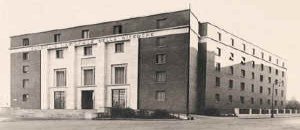History

The National Research Council of Italy was founded as legal person on 18 November 1923 (Royal Decree 2440/1923). Originally, it became member of the International Research Council, with offices in Brussels. The mission of Cnr has been defined in the first Statute dated 1924: to coordinate and stimulate research activity at a National level in the different areas of science, to keep in contact with various stakeholders on scientific matters and to establish National scientific laboratories. In January 1924 Vito Volterra was elected President of the National Research Council. The first headquarters was based at the Accademia dei Lincei and later moved to the current location in 1936.
During Italian Fascism, Cnr failed the objectives desired by the regime as a consequence of inadequate economic resources and inaccurate Governmental guidelines. At the end of the Second World War, favoured by the subsequent recovery of economic growth, Cnr became a public body supervised by the Government, with tasks of technical and scientific consultancy and coordination.

During the post-war years Cnr scientists have been involved in the promotion of European collaborations (with, among other agencies, CERN — the European Organization for Nuclear Research — and ESRO, later turned into the European Space Agency and the European Southern Observatory), activating connections with organisations based in the United States and starting new technological projects. A significant change occurred with the creation of independent Institutes and “Areas of Research”, which gather Institutes at a regional level, and the strengthening of partnerships for international projects and objectives. At the same time, the National Research Council has changed its internal structure several times through various reforms up to the current organisation.
Data source: President Secretary's Office
Last update: 27/04/2021
